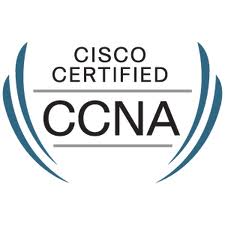The basic hierarchy of these command modes is as follows:
user EXEC mode->privileged EXEC mode->global configuration mode->
specific configuration modes->configuration submodes->configuration subsubmodes.
When you start a session on the router, you begin in user EXEC mode. For security purposes, only a
limited subset of EXEC commands are available in user EXEC mode. This level of access is reserved for
tasks which do not change the configuration of the router, like checking the router status.
1) USER EXEC MODE : -
To list the user EXEC commands, use the following command:
The user-level prompt consists of the host name followed by the angle bracket (>):
Router>
The default host name is Router unless it has been changed during initial configuration using the setup
command. Refer to the product user guide for information on the setup facility. You can also change the
host name using the hostname global configuration command described in the “Basic System
Management Commands” chapter in the Cisco IOS Configuration Fundamentals Command Reference.
To list the commands available in user EXEC mode, enter a question mark (?) as shown in the following
example:
Router> ?
Exec commands:
<1-99> Session number to resume
connect Open a terminal connection
disconnect Disconnect an existing telnet session
enable Turn on privileged commands
exit Exit from the EXEC
help Description of the interactive help system
lat Open a lat connection
lock Lock the terminal
login Log in as a particular user
logout Exit from the EXEC
menu Start a menu-based user interface
mbranch Trace multicast route for branch of tree
mrbranch Trace reverse multicast route to branch of tree
mtrace Trace multicast route to group
name-connection Name an existing telnet connection
pad Open a X.29 PAD connection
ping Send echo messages
resume Resume an active telnet connection
show Show running system information
systat Display information about terminal lines
telnet Open a telnet connection
terminal Set terminal line parameters
tn3270 Open a tn3270 connection
trace Trace route to destination
where List active telnet connections
x3 Set X.3 parameters on PAD
xremote Enter XRemote mode
2) Privileged EXEC Mode
Because many of the privileged commands set operating parameters, privileged access should be
password protected to prevent unauthorized use. The privileged command set includes those commands
contained in user EXEC mode, as well as the configure command through which you can access the
remaining command modes. Privileged EXEC mode also includes high-level testing commands, such as
debug. For details on the debug commands, see the Cisco IOS Debug Command Reference.
The privileged EXEC mode prompt consists of the devices’s host name followed by the pound sign (#),
as shown in the following example:
Router#
Step 1 : Router> enable [password] Enters the privileged EXEC mode.
Step 2 : Router# ? Lists privileged EXEC commands.
3) Global Configuration Mode :
Global configuration mode is used to configure your system globally, or to enter specific configuration modes
to configure specific elements such as interfaces or protocols. Use the configure terminal privileged
EXEC command to enter global configuration mode.
To access global configuration mode, use the following command in privileged EXEC mode:
Router# configure terminal From privileged EXEC mode, enters global configuration
mode.
The following example shows the process of entering global configuration mode from privileged EXEC
mode:
Router# configure terminal
Enter configuration commands, one per line. End with CNTL/Z.
Router(config)#
Note that the system prompt changes to indicate that you are now in global configuration mode. The
prompt for global configuration mode consists of the host-name of the device followed by (config) and
the pound sign (#). To list the commands available in privileged EXEC mode, issue the ? command at
the prompt.
3 ) Interface Configuration Mode :-
Step 1: Router(config)# interface type number From global configuration mode, enters interface
configuration mode.
Interface type no. are serial and ethernet ports , first check your interface type by typing command :
Router# show ip interface brief ( Exec Mode )
By typing this command your known interface will be displayed .
Step 2 : Router(config-if)# ? Lists the interface configuration commands.
It will look like as : Router(config)# interface serial 0 < Press Return >
Router(config-if)#

